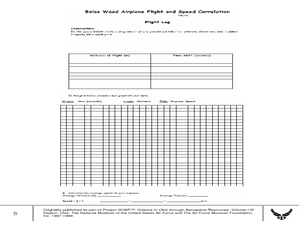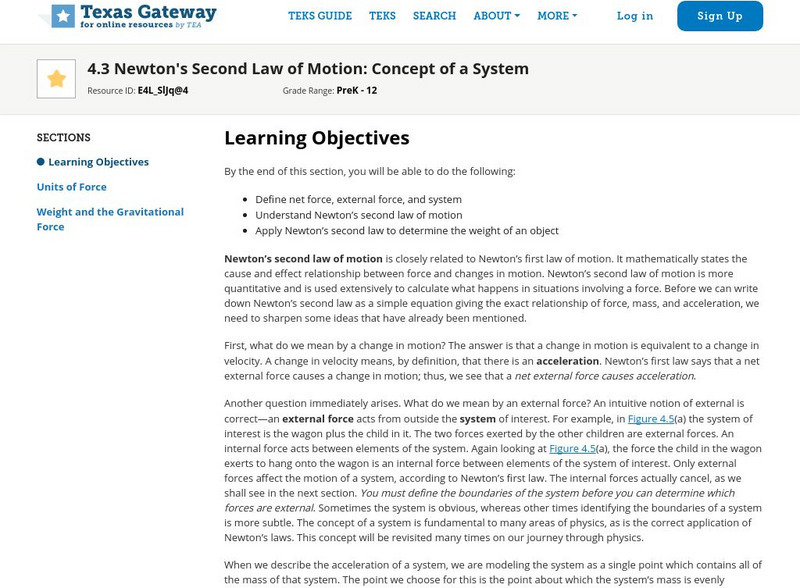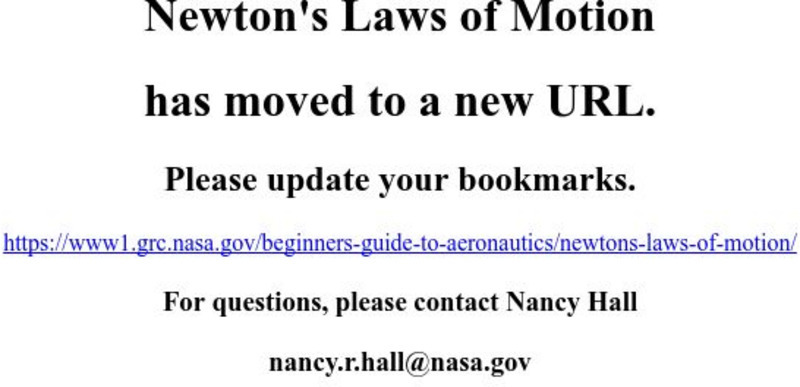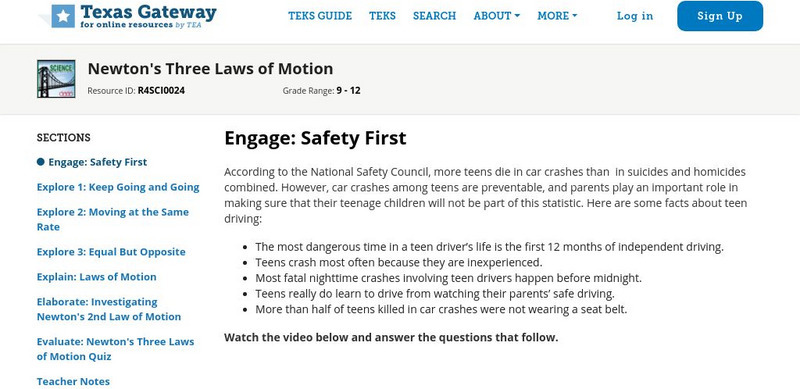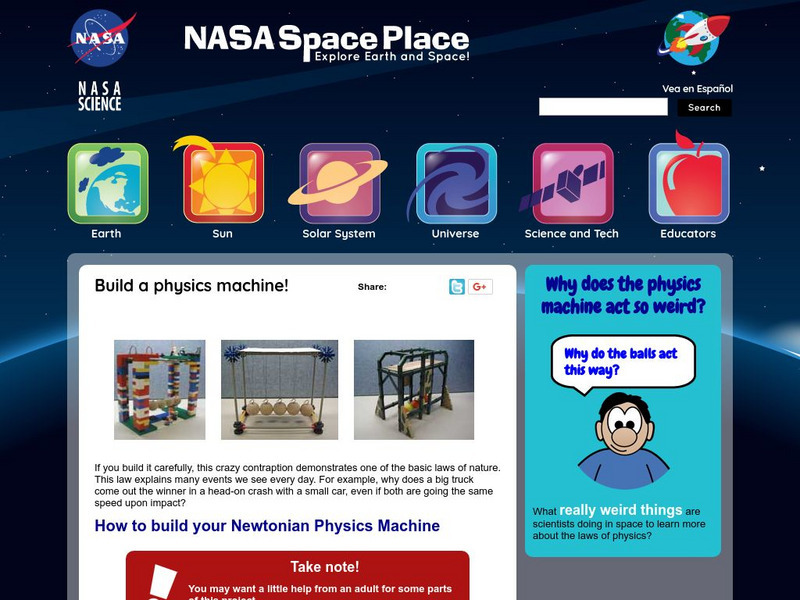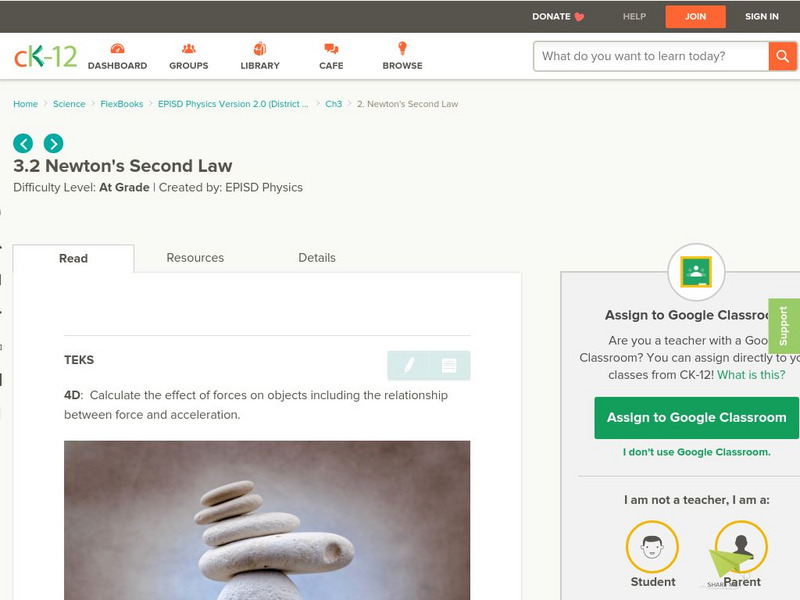Curated OER
Learn to Build a Rocket in 5 Days
Students explore physics by participating in an engineering activity. In this rocket lesson, students define a list of scientific vocabulary terms such as "re-engineering" and "trade-off." Students identify the rocket creation process by...
Curated OER
States of Matter Mini-Unit
Students identify he phases of matter (solid, liquid, gas), and why they take place. They comprehend what a physical change is and what a chemical change is. Students know the difference between a Mixture and a Solution.
Curated OER
Courtroom Testimony and Presentation
Twelfth graders examine the court process and practice writing and reviewing reports. They practice their public speaking skills as they pretend to present information to a court.
Curated OER
Balsa Wood Airplane Flight and Speed Correlation
Ninth graders calculate the average speed of their balsa wood airplane. For this physics lesson, 9th graders build their own airplane and make necessary modifications to to make it fly straight. They interpret distance and time graph...
OpenStax
Open Stax: Newton's Second Law of Motion: Concept of a System
In the following interactive students will begin to define net force, external force, and system and understand Newton's second law of motion. They will also apply Newton's second law to determine the weight of an object.
TED Talks
Ted: Ted Ed: Newton's 3 Laws, With a Bicycle
This video describes Newton's three laws of motion and how they relate to the everyday motion of a bicycle. [3:33] Followed by a short quiz and a list of additional resources to explore.
Texas Education Agency
Texas Gateway: 4.3 Newton's Second Law of Motion: Concept of a System
By the end of this section, you will be able to define net force, external force, and system; understand Newton's second law of motion; and apply Newton's second law to determine the weight of an object.
NASA
Glenn Research Center: Newton's Laws of Motion
NASA presents a concise explanation of Newton's three laws of motion. Click on the highlighted vocabulary to find more detailed and illustrated descriptions. Included is a link to a movie that shows how the laws of motion described the...
TeachEngineering
Teach Engineering: What Is Newton's Third Law?
Students are introduced to Newton's third law of motion, and then learn that engineers apply Newton's third law and an understanding of reaction forces when designing a wide range of creations, from rockets and aircraft to door knobs,...
TeachEngineering
Teach Engineering: What Is Newton's First Law?
Students are introduced to the concepts of force, inertia, and Newton's first law of motion: objects at rest stay at rest and objects in motion stay in motion unless acted upon by an unbalanced force.This lesson is the first in a series...
Science Education Resource Center at Carleton College
Serc: Investigating Newton's 3rd Law: Coin Flick
In this elementary physics investigation, students explore Newton's 3rd Law of Motion: To every action there is an equal & opposite reaction. Pairs of students will line up 5 pennies, (touching each other), between 2 rulers. The row...
PBS
Pbs Learning Media: Newton's Triple Play: Baseball Science
In this lesson, middle schoolers watch a video and animations that relate Isaac Newton's three laws of motion to baseball and apply what they've learned about these laws to another sport or other real-life situation. It includes...
Texas Education Agency
Texas Gateway: Newton's Three Laws of Motion
This resource provides alternate or additional learning opportunities for students learning the three Newton's Laws of Motion. It includes a collection of interactive materilas, videos, and other digital media.
Sophia Learning
Sophia: Newton's Second Law: Lesson 3
This lesson introduces Newton's Second Law and explains that force is equal to mass times acceleration. It is 3 of 3 in the series titled "Newton's Second Law."
Physics Classroom
The Physics Classroom: Newton's Laws: Newton's Second Law
Students begin to explore the meaning of Newton's Second Law of Motion by doing several self-checking practice problems.
CK-12 Foundation
Ck 12: Episd: Newton's First Law
[Free Registration/Login may be required to access all resource tools.] Apply mathematic equations to determine the effects of forces on objects as well as the law of inertia.
Sophia Learning
Sophia: Newton's First Law: Lesson 3
This lesson introduces Newton's First Law, that inertia causes objects at rest to remain at rest, and objects in motion to remain in motion. It is 3 of 3 in the series titled "Newton's First Law."
Sophia Learning
Sophia: Newton's Third Law: Lesson 2
This lesson will show that when a force is exerted on an object, an equal and opposite force is produced, as stated in Newton's Third Law. It is 2 of 3 in the series titled "Newton's Third Law."
NASA
Nasa: The Space Place: Build a Newtonian Physics Machine
Great hands on way to explain Newton's Second Law of Motion. Choose from three different Newtonian physics machines to build and test Newton's Second Law.
Alabama Learning Exchange
Alex: Experiencing Newton's Laws of Motion
This lesson will approach the study of Newton's 3 Laws of Motion using McGraw-Hill Science textbook Unit F. The students will be given an overview of the laws and vocabulary words to study. After introducing and explaining the concept of...
TeachEngineering
Teach Engineering: What Are Newton's Laws?
Through a series of three lessons and one activity, students are introduced to inertia, forces, and Newton's three laws of motion.
Sophia Learning
Sophia: Newton's First Law of Motion: Lesson 2
This lesson introduces Newton's first law of motion otherwise known as the law of inertia. It is 2 of 3 in the series titled "Newton's First Law of Motion."
Scholastic
Scholastic: Study Jams! Science: Forces and Motion: Action and Reaction
A video and a short quiz on Newton's Third Law of Motion. It breaks down what action and reaction mean, and how mass and acceleration factor into the outcome of a collision.
CK-12 Foundation
Ck 12: Episd: Newton's Second Law
[Free Registration/Login may be required to access all resource tools.] Break down how the relationship between acceleration and mass directly relates to the mass of an object.





